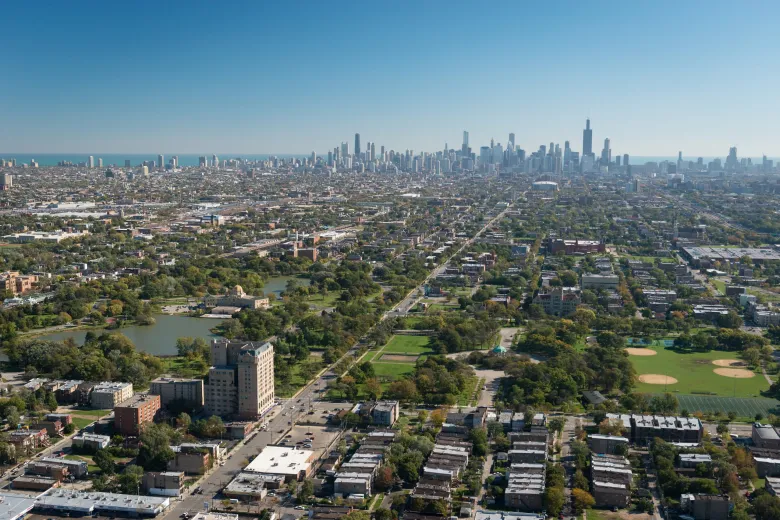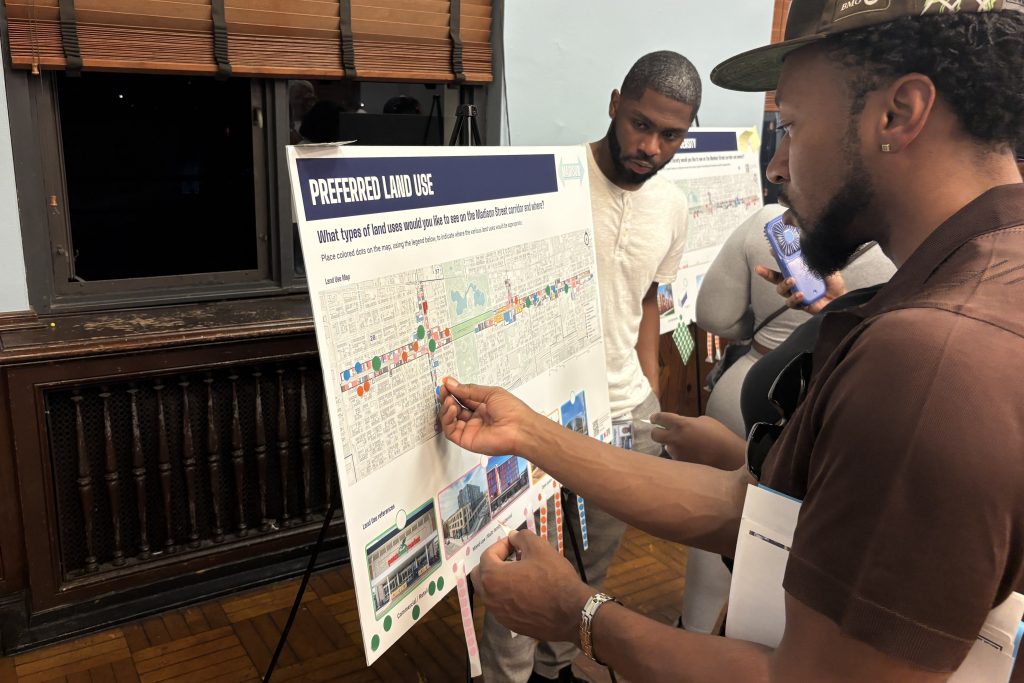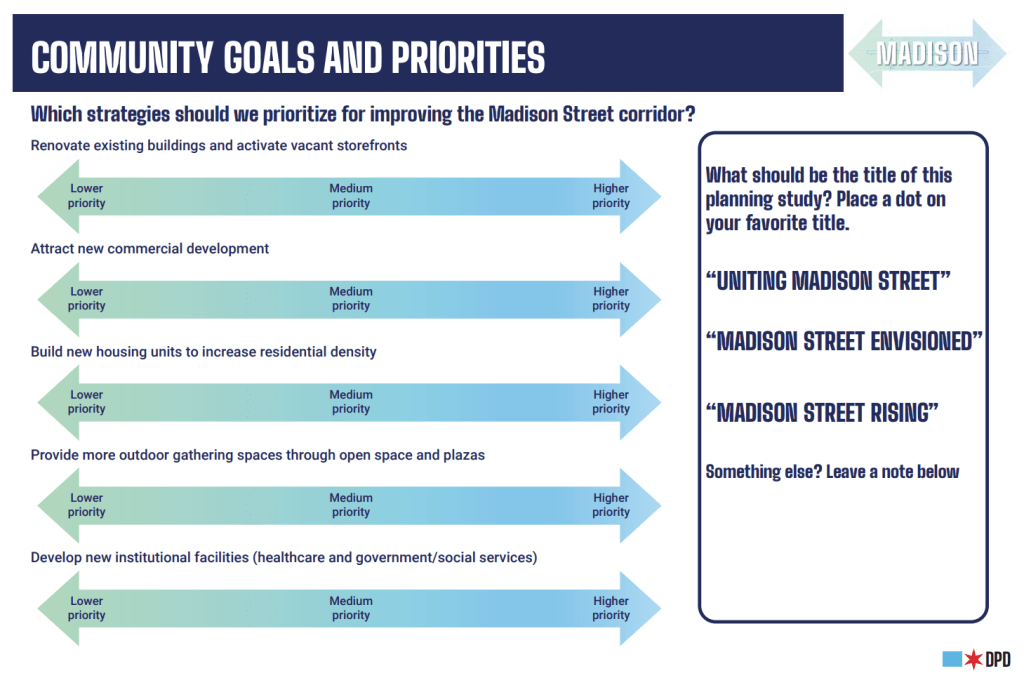How Can West Side’s Madison Street Be Improved? City Works To Reverse Years Of Disinvestment

GARFIELD PARK — Plans to overhaul the West Side’s stretch of Madison Street are in the works, and the city is looking to hear from residents on what they want to see.
The Madison Street Corridor Study by the Chicago Department of Planning and Development is looking to transform the 3-mile stretch of the street from Hoyne Avenue to Kenton Avenue, running through the Near West Side and East and West Garfield Park. The study will be used to create a community-oriented development plan by spring that shapes long-term investments in the area, according to the department.
Through the study, city officials hope to help restore Madison Street to its previous heights as an epicenter of West Side life. The street was previously lined with hotels, theaters and department stores. Officials also hope to build on recent successes on the street.
“If Madison is on track, the West Side is on track,” said Ald. Jason Ervin (28th). “If we get Madison going, everything else will fall into place, from housing to other economic developments. There’s plenty of things happening along that corridor, and it’s starting to bleed onto the Jackson Corridor, Lake Street Corridor as we look at revitalizing the West Side.”
The first of at least two planned community meetings to discuss the study was held Sept. 29 at the Garfield Park Fieldhouse, 100 N. Central Park Ave.
At that meeting, there were boards where community members could leave feedback for Madison Street. Goals such as renovating buildings, attracting commercial developments, increasing residential density through new housing and providing more outdoor gathering spaces were all topics that residents could weigh in on.
Neighbors could also note challenges along the corridor.

Throughout much of the 1900s, Madison Street was a thriving commercial corridor known as the “Heart of the West Side” and the “Equator of Chicago,” referring to the stores lining the street from Downtown to the western city limits. A 2020 ProPublica analysis chronicled the timeline of disinvestment in the area following the riots of April 1968 after Martin Luther King Jr. was assassinated.
The riots, paired with lack of government support, widespread demolition of blighted buildings and lack of action from private outside investors fueled Madison Street’s decline.
In recent years, the area has seen major developments breathe new life into the corridor, the Fifth City Commons, Revolution Workshop and Firebird Community Arts among them.
Notable upcoming projects near or on Madison Street include MAAFA Center for Arts and Activism, BandWith Chicago, Sankofa Wellness Center and the 1901 Project near the United Center.
There are $390 million in committed and planned investments for Madison Street, according to the city’s Department of Planning and Development. Additionally, 250 new housing units are coming to the area alongside 138,000 square feet of commercial and industrial space across planned or recently built.
But there is still room for more development, officials said.
The department has an open request for proposals to redevelop four clusters of land, including 19 city-owned lots, along Madison Street across the Near West Side and Garfield Park, with submissions due Oct. 31.

A working group of local leaders and organizations is working to represent the Garfield Park and Near West Side communities in the process, including the 27th and 28th ward offices, the Garfield Park Community Council, Homeowners of West Town and the Madison Business Association.
For residents unable to make last week’s meeting, the Department of Planning and Development launched an online survey that will remain open through Oct. 31.
To learn more on the Madison Street Corridor Study, visit its webpage.
